ETS provides a wide array of Well Testing and Production services to the E&P Company for upstream and downstream solution. Our innovative surface and down hole well testing service delivers accurate results that help you characterize your reservoir economically, giving you confidence in your well's ability to produce. All equipment has been manufactured by leading international manufacture.
Tests on oil and gas wells are performed at various stages of well construction, completion and production. The test objectives at each stage range from simple identification of produced fluids and determination of reservoir deliverability to the characterization of complex reservoir features.
Most well tests can be grouped as productivity testing or descriptive testing. Productivity well tests are conducted to
- Identify produced fluids and determine their respective volume ratios
- Measure reservoir pressure and temperature
- Obtain samples suitable for pressure-volume-temperature (PVT) analysis
- Determine well deliverability
- Evaluate completion efficiency
- Characterize well damage
- Evaluate workover or stimulation treatment.
Descriptive tests seek to
- Evaluate reservoir parameters
- Characterize reservoir heterogeneities
- Assess reservoir extent and geometry
- Determine hydraulic communication between wells.
Whatever the objectives, well test data are essential for the analysis, prediction and improvement of reservoir performance. These in turn are vital to optimizing reservoir development and efficient asset management.
Well testing technology is evolving rapidly. Integration with data from other reservoir-related disciplines, constant evolution of interactive software for transient analysis, improvements in downhole sensors and better control of the downhole environment have all significantly increased the importance and capabilities of well testing.
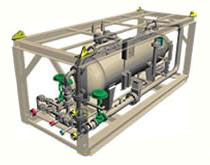 |
Conventional Horizontal Separator Instrumented vessel that separates well effluent into three phases for onshore and offshore well testing; can operate as a stand-alone unit or portable multiphase flowmeter technology.
|
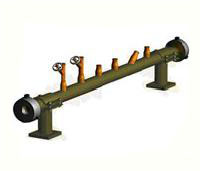 |
Data Header Short sub connected to upstream side of choke manifold to provide additional pressure gauge, thermowell, and sampling or injection ports; allows connection of pressure and temperature monitoring equipment, as well as sampling and injection equipment.
|
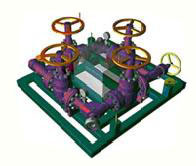 |
Floor Choke Manifold Four manual valves (five if bypass valve is included) used to control flow rate and reduce well pressure before flow enters processing equipment.
|
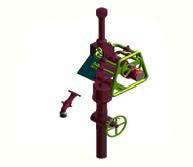 |
Flow head Four gate valves used to hang test string from elevator and to control flow through master and flow valves; if fitted with a swivel, it allows test string to rotate. Compatible with slickline and electric line operations.
|
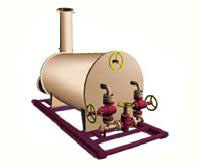 |
Indirect-Fired Heater Skid-mounted indirect-fired diesel heater used to raise the temperature of well effluents to prevent hydrate formation, reduce viscosity, and break down emulsions.
|
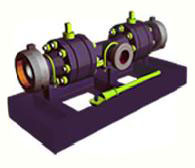 |
Oil and Gas Manifolds (MFDs) Manifolds that divert oil or gas without flow interruption from a separator to burners for disposal, to a tank for measurements or storage, or to a production line.
|
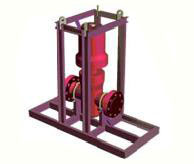 |
Surface Safety Valve Hydraulically actuated fail-safe gate valve for testing oil and gas wells; used to quickly shut in a well upstream of the choke manifold in case of overpressure, failure, a leak in downstream equipment, or any other well emergency requiring an immediate shut-in.
|
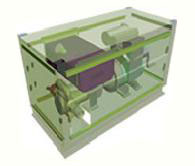 |
Transfer Pump (PMP) Pump that pumps oil from tank to burner or from tank into existing flowline; usually fitted with explosion-proof electrical motor for operations in Zone 2 regions; can also be fitted with diesel engine for remote location operations.
|
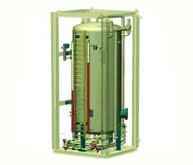 |
Vertical Surge Tank H2S service vessel that stores liquid hydrocarbons after separation; used to measure liquid flow rates and combined shrinkage and meter factor; also used as second stage separator.
|
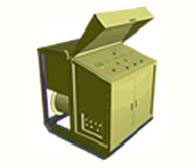 |
Well Test Emergency Shutdown (ESD) System Multistation system that permits closure during testing operations in response to an emergency; remotely and simultaneously controls the flowline valve on the flowhead and surface safety valve.
|



 MISSION STATEMENT
MISSION STATEMENT



































